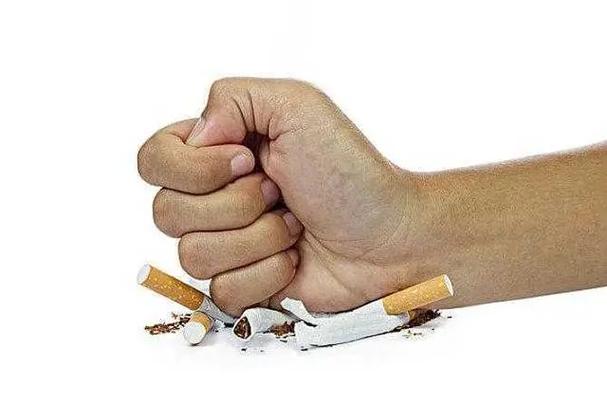Clearing the Air: How Tobacco Use Elevates the Risk of Bladder Surgery Recurrence
If you're reading this, you or someone you care about has likely faced the challenge of a bladder neck obstruction. Undergoing surgery to correct this condition is a significant step toward reclaiming your comfort and quality of life. It's a procedure designed to provide a long-term solution, offering the promise of improved urinary flow and an end to frustrating symptoms. However, a critical, and often overlooked, factor can dramatically influence the long-term success of this operation: tobacco use.
While the link between smoking and lung cancer is well-known, the profound impact of tobacco on surgical outcomes, particularly in urology, deserves much more attention. The reality is that using tobacco products—be it cigarettes, cigars, or vaping devices—significantly increases the risk of the bladder neck obstruction recurring after surgery. This isn't just a minor footnote in your recovery plan; it's a central pillar that can determine whether your surgery is a permanent fix or a temporary relief.
Let's delve into the "why" and "how," breaking down the complex biological processes into understandable concepts. The connection lies primarily in three destructive pathways: impaired healing, chronic inflammation, and direct tissue damage.
The Foundation of Failure: Impaired Healing and Tissue Weakness

Surgery, by its nature, creates trauma that the body must then repair. For bladder neck surgery to be successful, the operated tissues need to heal strong, smooth, and flexible. This process relies on a robust blood supply, delivering oxygen and essential nutrients to the surgical site. Nicotine, a primary component of tobacco, is a potent vasoconstrictor. This means it causes your blood vessels to narrow, reducing blood flow throughout your body, including the delicate tissues of the bladder neck.
Imagine trying to rebuild a house with a severely restricted supply route for materials. The construction would be slow, shoddy, and the final structure would be weak. This is precisely what happens at a cellular level. With reduced blood flow, the formation of healthy collagen—the protein that gives tissue its strength and structure—is compromised. The result is often the development of poor-quality, fibrous tissue that is less elastic and more prone to scarring. This suboptimal healing environment directly paves the way for the recurrence of bladder neck contracture, a common form of obstruction where scar tissue forms and narrows the passage once again.
Furthermore, carbon monoxide from tobacco smoke binds to hemoglobin in red blood cells much more readily than oxygen does. This creates a state of functional anemia, further starving the healing tissues of the very oxygen they desperately need to regenerate properly. This dual assault of vasoconstriction and carbon monoxide poisoning creates a perfect storm for surgical failure.
Fanning the Flames: Chronic Inflammation and Oxidative Stress
Beyond starving the tissues, tobacco smoke actively poisons them. It contains thousands of toxic chemicals that trigger a state of persistent, low-grade inflammation throughout the body. In the context of bladder neck obstruction surgery, this is like continuously pouring gasoline on a smoldering fire.
The surgical site, which should be calmly progressing through the stages of healing, is instead bombarded with inflammatory cells and chemicals. This prolonged inflammatory response can disrupt the normal healing cascade and encourage the overproduction of scar tissue. The body's natural response to injury becomes exaggerated and destructive. This impact of smoking on urological surgical outcomes is profound because it directly interferes with the body's ability to achieve a clean, stable repair.
Adding to this is oxidative stress. Tobacco smoke generates an excess of unstable molecules called free radicals, which damage cellular structures, including DNA and cell membranes. The body has antioxidant systems to neutralize these, but the sheer volume from smoking overwhelms them. This oxidative damage further impedes healing and contributes to cellular dysfunction in the bladder neck, increasing the risk of postoperative complications in bladder surgery for smokers.
The Direct Assault on Bladder Health
While the mechanisms above affect healing in general, tobacco use also has direct, negative consequences for the bladder itself. Many of the carcinogens in tobacco are absorbed into the bloodstream, filtered by the kidneys, and concentrated in the urine. This means the lining of the bladder is in constant contact with a toxic soup. This long-term exposure can lead to a chronic inflammatory condition of the bladder lining, making the entire organ less healthy and more irritable even before surgery.
For a patient undergoing a procedure to relieve an obstruction, starting with an already compromised organ is a significant disadvantage. The bladder's ability to adapt to the new, improved anatomy and function after surgery is hindered by this pre-existing, tobacco-induced damage. This underscores the direct link between tobacco use and bladder neck obstruction surgery failure.
Beyond the Bladder: Systemic Consequences
The repercussions of tobacco use extend to your overall surgical risk profile. Smokers have a significantly higher risk of developing postoperative respiratory complications like pneumonia, which can delay recovery and divert the body's resources away from healing the surgical site. They are also more prone to infections, a serious concern after any operation. A surgical site infection in the pelvic area can lead to devastating consequences, including the formation of extensive scar tissue that directly causes a recurrence of the obstruction.
The Vaping Question: Is It a Safer Alternative?
In the face of this evidence, many patients wonder if switching to electronic cigarettes or vaping can mitigate these risks. The short and current answer, based on existing research, is a cautious no. While vaping may eliminate some of the combustion products found in traditional cigarette smoke, it still delivers a high dose of nicotine, with all its vasoconstrictive effects on healing. Furthermore, the aerosols from vaping contain their own set of potentially harmful chemicals, metals, and ultrafine particles that can cause inflammation and oxidative stress. The long-term health impacts are still being studied, but for the purpose of optimizing surgical recovery, vaping is not a safe alternative. The goal should be complete cessation of all nicotine products.
Your Power to Change the Outcome: The Path to a Successful Recovery
The message here is not one of doom, but of empowerment. The single most impactful action you can take to protect your surgical investment and maximize your chances of a permanent, successful outcome is to quit using tobacco. The benefits of quitting begin almost immediately:
- Within 24 hours: Your blood pressure and heart rate begin to drop, and carbon monoxide levels in your blood normalize, improving oxygen delivery.
- Within 2 weeks to 3 months: Your blood circulation and lung function improve significantly. The inflammatory response in your body starts to calm down.
- By 1 to 9 months: Cilia in your lungs regrow, improving your ability to clear mucus and reduce infection risk.
For surgical success, quitting even a few weeks before your procedure can make a substantial difference. Ideally, cessation should occur at least 4-8 weeks pre-operatively to allow the body's healing mechanisms to reset. However, quitting at any time—before or after surgery—is beneficial and can help prevent a recurrence down the line.
Tackling tobacco dependence is challenging, but you don't have to do it alone. Speak openly with your urologist and primary care physician. They can connect you with resources such as:
- Smoking cessation counseling and programs.
- Nicotine replacement therapies (patches, gum, lozenges).
- Prescription medications that can reduce cravings and withdrawal symptoms.
- Support groups and hotlines.
Your decision to undergo bladder neck obstruction surgery was a brave step toward a better life. By addressing the role of tobacco, you are taking an equally brave and even more crucial step to ensure that this surgery is the last one you'll need for this problem. You have the power to clear the air, not just for your lungs, but for your path to a full and lasting recovery. Prioritize your healing, commit to cessation, and give yourself the best possible chance for a future free from obstruction.












